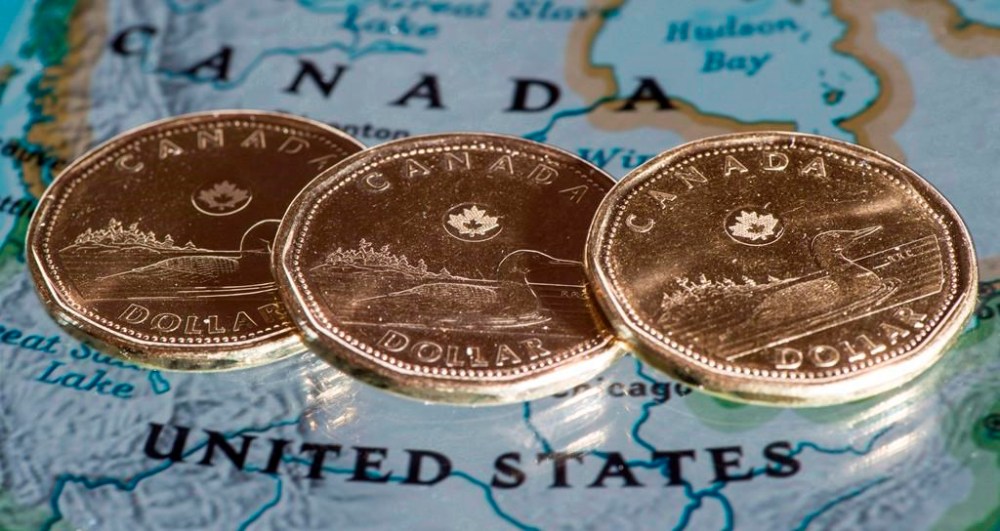Loonie falls to lowest since 2020 after Trump threatens tariffs on Canadian goods
Advertisement
Read this article for free:
or
Already have an account? Log in here »
To continue reading, please subscribe:
Monthly Digital Subscription
$0 for the first 4 weeks*
- Enjoy unlimited reading on winnipegfreepress.com
- Read the E-Edition, our digital replica newspaper
- Access News Break, our award-winning app
- Play interactive puzzles
*No charge for 4 weeks then price increases to the regular rate of $19.00 plus GST every four weeks. Offer available to new and qualified returning subscribers only. Cancel any time.
Monthly Digital Subscription
$4.75/week*
- Enjoy unlimited reading on winnipegfreepress.com
- Read the E-Edition, our digital replica newspaper
- Access News Break, our award-winning app
- Play interactive puzzles
*Billed as $19 plus GST every four weeks. Cancel any time.
To continue reading, please subscribe:
Add Free Press access to your Brandon Sun subscription for only an additional
$1 for the first 4 weeks*
*Your next subscription payment will increase by $1.00 and you will be charged $16.99 plus GST for four weeks. After four weeks, your payment will increase to $23.99 plus GST every four weeks.
Read unlimited articles for free today:
or
Already have an account? Log in here »
Hey there, time traveller!
This article was published 26/11/2024 (359 days ago), so information in it may no longer be current.
The Canadian dollar fell to its lowest level since May 2020 after Donald Trump threatened to impose tariffs on Canadian goods shipped to the United States once he takes office in January.
The threat of tariffs added a further drag on the loonie, which has been moving lower against the U.S. dollar since September.
The loonie was at 71.01 cents US in early afternoon trading after dipping below 71 cents US earlier in the day.
BMO Capital Markets senior economist Robert Kavcic said financial markets were responding to increased risk on the trade front.
“It’s a pretty stiff headwind against the currency that’s already been under pressure just from domestic economic factors,” he said.
Kavcic noted the loonie was already being pressured by a softer Canadian economy and interest rate cuts by the Bank of Canada.
The central bank has cut its benchmark rate four times this year including a half-percentage point cut in October to bring it to 3.75 per cent as its concerns have shifted from the need to cool inflation to the need for stronger economic growth.
Trump posted to Truth Social on Monday that he will impose a 25 per cent tariff on all products from Canada and Mexico. He said the tariff will remain in place until both countries stop drugs, in particular fentanyl, and people from illegally crossing the borders.
However, Trump’s edict on social media isn’t U.S. government policy yet and even if it comes to pass, it may only be temporary as the president-elect linked it to conditions regarding the border.
Karl Schamotta, chief market strategist at Corpay, noted that investors don’t expect Trump to follow through.
“Canadian Prime Minister (Justin) Trudeau has already shown signs of capitulating to Trump’s demands, and the president-elect’s history would suggest that last night’s post simply represented an opening gambit in the negotiation process,” he wrote in a note to clients.
“The Canadian dollar seems poised for modest reversal to the upside once traders assess the situation from a more nuanced perspective.”

While a weaker loonie raises the costs for Canadians looking to do cross-border shopping this week on Black Friday, it also makes Canadian goods cheaper for buyers with U.S. dollars, offsetting in part some of the costs of any potential tariffs for Americans.
Any tariffs may also include carve outs for specific industries such as oil and gas as well as the auto sector, which sees parts zip back and forth across the border before their final assembly in a car or truck.
“The energy sector doesn’t make sense because they don’t have an ability to readily replace three million barrels a day of production,” Kavcic said.
“And then there are other areas like autos where the industry is so integrated.”
This report by The Canadian Press was first published Nov. 26, 2024.
Companies in this story: (TSX:CADUSD)







